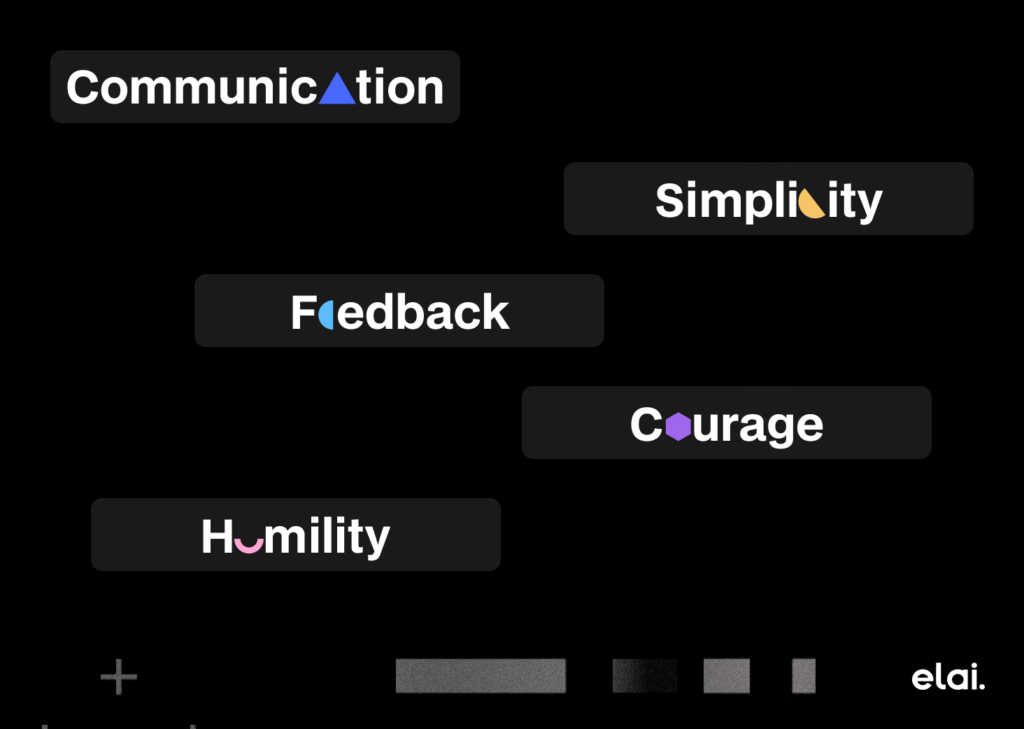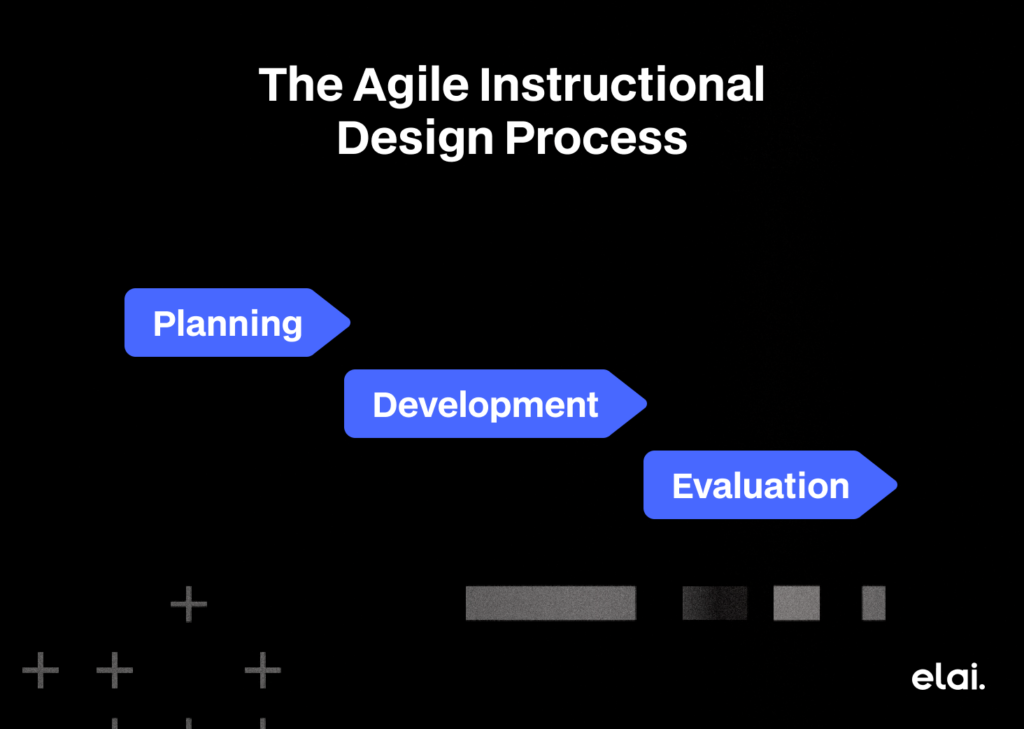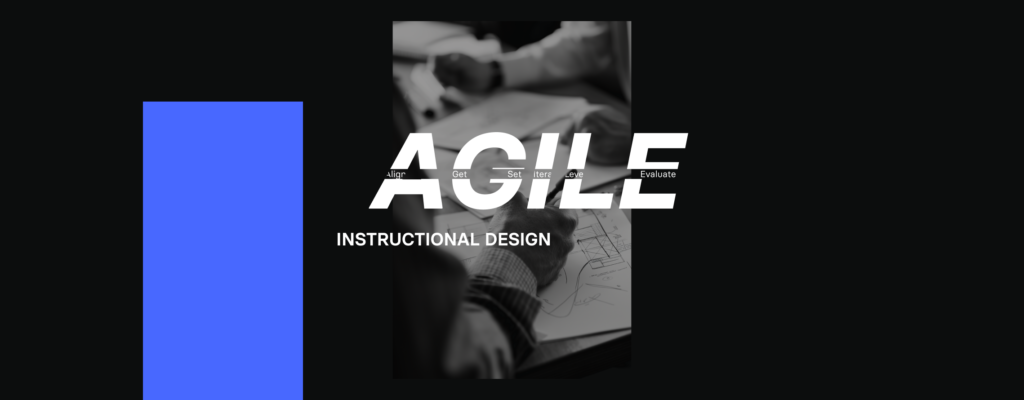Market analysts, in the last few years, have observed a trend that many organizations are moving to Agile methodologies. Learning agility in the workplace has now turned out to be an indispensable technique for cutting-edge representative preparation and development. Taking the lead from other IT projects, instructional design has been increasingly embracing Agile methodology to develop learning that is more flexible, responsive, and learner-centric. The report says that almost 9 out of 10 marketers are about to implement various fundamental Agile practices into their marketing initiatives. Likewise any other methodology, the adoption of Agile can involve numerous unknowns and obstacles. Issues may arise while individuals embrace new values of the organization. On the other hand, still, there are a few advantages of it. Agile methodologies in instructional design are a better way of project management than traditional methods. This makes all of these frameworks suitable for the fast-moving, agile business environment that we are in right now since they all promote iteration, collaboration, and continuous improvement.
In this article, we will dive deeper into the main agile principles for learning design, its benefits, and best practices, and also discover the particularities of the agile instructional design process while creating effective, engaging, and relevant learning experiences that support employee development and organizational success.
What is Agile Learning in Education?
First and foremost, let’s define the term “AGILE” itself. Agile is an acronym. The core concept behind the term doesn’t prescribe a rigid plan at the outset. Instead, it focuses on delivering value incrementally through a series of iterative cycles:
Align – Establish clear objectives and set specific goals.
Get Set – Design a detailed roadmap for how the process will unfold.
Iterate – Implement the plan step-by-step to achieve the set objectives.
Leverage – Gather and utilize the data obtained from the execution phase.
Evaluate – Analyze the results and use the insights to refine and enhance the process for future iterations.
What is agile instructional design? Instead of the more linear pathway from identification of needs to improved product/service delivery that traditional approaches often follow, agile design is an iterative process focused on ongoing learning, feedback, and collaboration. Reflecting the result of the ability to learn agilely, in general, agile learning is a widely flexible and collaborative behavior for education against the application of needed 21st-century skills that can anchor learners’ future to success in a dynamically evolving world.
Key Principles of Agile Instructional Design
- Agile includes the microlearning principle by breaking down the learning experience into smaller, manageable cycles or sprints. Each sprint results in a deliverable, allowing for feedback and adjustments before moving to the next phase.
- Agile design creates a collaborative learning space so that learners, instructors, and subject matter experts can work together in the development process. It helps in the outcome where it serves as an aid to satisfy the target audience and makes everything fall in line so that organizational objective is met.
- Why agile methods are so useful is that they adapt to changing requirements and circumstances. It means that updates based on feedback, new information, or changes in learning needs can be made.
- Agile design stresses constant iteration and optimization. Consistently communicate and assess how well learning experiences are working to adapt them for the changing needs of learners.
- Agile design emphasizes ongoing refinement and improvement. Regular feedback and evaluation can enable improvements to be made continually, in line with how expectations of learners change over time.
Differences Between Agile and Traditional Approaches
Agile and traditional instructional design represent two distinct approaches to creating learning experiences. While both aim to deliver effective training, their methodologies and philosophies differ significantly.
Traditional Instructional Design
- Linear Approach: Follows a sequential process, often based on the ADDIE model (Analysis, Design, Development, Implementation, Evaluation).
- Detailed Planning: Requires extensive upfront planning, including defining objectives, content, and assessments.
- Rigid Structure: Less adaptable to changes or unexpected challenges.
- Focus on End Result: Prioritizes the final product over the process.
Agile Instructional Design Method
- Iterative Approach: Break down the learning experience into smaller, manageable cycles or sprints.
- Flexibility: Adapt to changing requirements and feedback throughout the process.
- Collaboration: Motivate the teamwork and collaboration between learners, educators, and stakeholders.
- Continuous Improvement: Prioritize ongoing refinement and improvement based on feedback.
The key distinction is that traditional instructional design tends to be structured and predictable, whereas agile design is more flexible and reactive. Which of the two is preferable, can be decided based on the project requirements at hand, typology of learning content and adaptive level wanted.
What are the 5 values of agile for instructional design?
Communication: Agile learning and development promotes communication between your team and your stakeholders as well as between developers on your team.
Simplicity: Developers must understand that models are critical for simplifying both software and the software process.
Feedback: Agile emphasizes the importance of feedback throughout the development process. This includes getting feedback from stakeholders, team members, and the software itself.
Courage: It takes courage to be willing to change your mind or to try something new. Agile encourages developers to be courageous and to experiment with different modeling techniques.
Humility: Agile Instructional Design Model is about recognizing that we don’t have all the answers. It’s important to raise a continuous desire to learn and develop.

Benefits of Agile for Instructional Designers
In the nimble here-and-now world of education and training, people often experience old-style instructional design (with up-front planning) as a straitjacket. This is a practice that, although commonplace, makes for slow, unadaptable, outdated or irrelevant content. This is one of those areas that nobody ever saw coming: instructional design and the Agile methodology, which originated in the world of learning and development. The research proves that professionals across various roles have experienced a beneficial impact from Agile adoption. More than half of the participants noticed enhanced collaboration and better alignment with organizational objectives.
Agile allows instructional designers to deliver value incrementally, gather feedback early and often, and adapt to changing requirements. This approach is particularly well-suited to the dynamic nature of education, where learning needs and technologies are constantly evolving. Find key benefits of Agile Instructional Design:
Increased Flexibility: The iterative nature of Agile can better support the ability of designers to respond more effectively to changes in learning objectives, technology, or business needs. That is essential in today’s fast and light knowledge world where educational content can be outdated very quickly.
Improved Collaboration: Agile also nurtures the idea of collaboration among designers, subject matter experts, and learners all contributing to the development process. This guarantees that the result is bespoke to the learners and is in line with business objectives.
Faster Time to Market: Agile can reduce the time it takes to bring new education content to market by delivering that value in smaller increments. This is even more crucial in highly competitive circumstances, where effective speed lies the path to maximum advantage.
Enhanced Learner Engagement: By breaking down and releasing smaller pieces of learning content, you can focus the designing experience on creating engagement and powerful learning experiences that will have an impact. By incorporating learner feedback at all points in the process, designers can ensure that the content is relevant, accessible, and exciting.
Reduced Risk: This reduces risk by catching and allowing designers to fix problems early in the development process. Ensures that the final result is top-notch to avoid costly mistakes.
Enhanced Cost-Effectiveness: Agile allows us to reduce costs naturally. Agile does this, first by catching issues early and secondly by reducing the amount of rework that is expensive. Second, by concentrating on incremental value instead of over-producing content, Agile nudges designers to realize the importance of their work and prioritize features. And last but not least, with Agile’s collaboration approach we can optimize the resources and reduce the development time.
The Agile Instructional Design Process
Organizations can create more effective and engaging learning experiences that drive positive outcomes by setting the proper agile instructional design process. We have divided it into 3 phases:
Planning Phase
Agile instructional design begins with the planning stage and it is one of the most vital parts of any project. Here you define what learners will know, understand, or be able to do after engaging with the instruction (e.g., learning outcomes) and you can predict what some high-level plans based on this experience could look like.
Development Phase
The development stage is creating the instructional materials. In this next phase, breaking the development process down into smaller motion cycles that will allow for agile feedback and adjustments, frequent testing of instructional materials with learners to identify areas needing bookended improvements, converting feedback back into design language as well as involving SMEs, IDs, developers, and learners all in one workflow will ensure there is clear alignment with learning objectives and target audience need.
Evaluation Phase
Ongoing evaluation and assessment are everything in agile instructional design. In turn, this allows you to check if the learners can do what you claim they will be able to do, spot where the design of your instructions has gone wrong and needs addressing further, and establish that your instructional materials continue to be relevant and work well with time.

Best Practices for Agile Instructional Design for Training
Building a Strong Team. A collaborative and skilled team is essential for successful agile instructional design. This team should include individuals with diverse expertise, such as instructional designers, Subject Matter Experts (SMEs), developers, and project managers.
Utilizing Effective Tools and Technologies. The right tools and technologies can significantly enhance the efficiency and effectiveness of agile instructional design. Ensure that the tools you select can integrate with your existing systems.
Prioritizing Continuous Improvement. Agile instructional design is based on the principle of continuous improvement. This means that teams should constantly reflect on their work, identify areas for improvement, and make necessary adjustments.
Conclusion
Unlike traditional design methods, agile instructional design provides learning experiences in a much faster and dynamic way. It fits well in the current fast-moving, continuously changing business environment by promoting iterative development, collaboration, and continual improvement. It allows organizations to develop learning experiences with unprecedented effectiveness, engagement, and relevance that drive both employee development and organizational success.
FAQ
What is agile instructional design?
Agile instructional design is a flexible and iterative approach to creating learning experiences. It emphasizes collaboration, continuous improvement, and learner feedback, making it well-suited for today’s fast-paced and ever-changing learning environments.
What is agile methodology in eLearning?
In eLearning, agile methodology involves breaking down the development process into smaller, manageable cycles called sprints. Each sprint delivers a working product, allowing for feedback and adjustments before moving on to the next iteration. This approach promotes flexibility, responsiveness, and learner-centricity.
How to learn agile methodologies?
To learn agile methodologies, consider online courses and platforms, which can provide a solid foundation. Also, books that offer in-depth knowledge. Try attending workshops or obtaining certifications for better practical experience and credibility.
What are the steps in the agile instructional design model?
- Planning: Define learning objectives, target audience, and initial project scope.
- Iterative Development: Break down the project into sprints and develop increments of the learning experience.
- Collaboration: Foster collaboration among instructional designers, subject matter experts, and learners.
- Feedback and Refinement: Gather feedback from learners and stakeholders to continuously improve the learning experience.
- Evaluation: Assess the effectiveness of the learning experience and make necessary adjustments.

